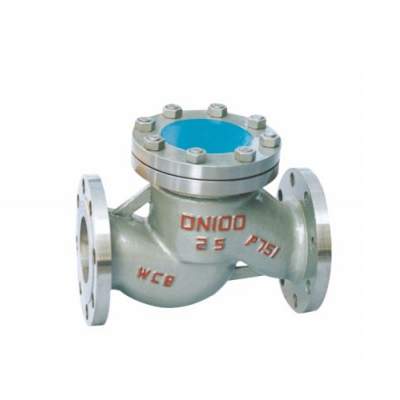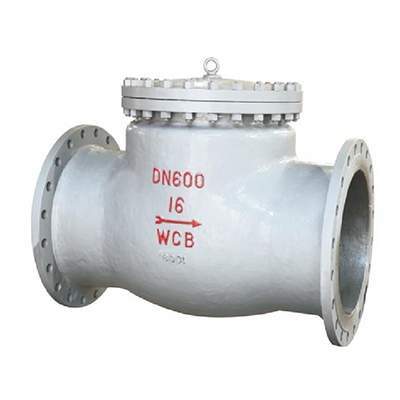Welcome to My Blog!
Before we dive into the content, I’d love for you to join me on my social media platforms where I share more insights, engage with the community, and post updates. Here’s how you can connect with me:
Facebook:https://www.facebook.com/profile.php?id=61563865935136
Now, let’s get started on our journey together. I hope you find the content here insightful, engaging, and valuable.
Introduction

The function of a check valve is a cornerstone of fluid system design, ensuring seamless operation, safety, and efficiency across a wide range of industries. Check valves, often referred to as non-return valves, are engineered to permit fluid flow in one direction while preventing backflow, which can lead to system inefficiencies, equipment damage, or even catastrophic failures. At Fanlei, a premier valve manufacturing company with expertise in research, design, production, and sales, we recognize the indispensable role that the function of a check valve plays in delivering high-quality, reliable valve solutions for diverse applications. This comprehensive blog explores the mechanics, applications, benefits, and innovations surrounding the function of a check valve, providing insights into why it is critical for modern fluid systems.
Check valves are ubiquitous in industries such as oil and gas, water treatment, chemical processing, and HVAC systems, where the function of a check valve ensures operational continuity and protects critical infrastructure. By understanding the principles behind check valves and their applications, businesses can make informed decisions about selecting the right valve for their needs. Fanlei’s commitment to innovation and quality ensures that our check valves are designed to meet the most stringent industry standards, delivering unparalleled performance in demanding environments.
What is the Function of a Check Valve?
At its core, the function of a check valve is to ensure unidirectional fluid flow within a piping system. This is achieved through a simple yet robust mechanism that allows fluid to pass in the desired direction while automatically closing to prevent reverse flow. The function of check valve is critical in preventing backflow, which can cause contamination, pressure surges, or equipment failure. Check valves operate without external control, relying solely on the pressure of the fluid to open or close the valve, making them highly reliable and low-maintenance.
For example, in a water distribution system, the function of check valve prevents contaminated water from flowing back into the clean water supply, safeguarding public health. Similarly, in oil and gas pipelines, check valves protect pumps and compressors from damage caused by reverse flow. Fanlei’s check valves are meticulously designed to optimize the function of check valve, incorporating advanced materials and engineering to ensure durability and performance in even the most challenging conditions.
How the Function of a Check Valve Enhances System Safety
The function of a check valve is integral to maintaining the safety of fluid systems. Backflow can lead to severe consequences, such as equipment damage, contamination, or even explosions in high-risk industries like oil and gas. By preventing reverse flow, check valves protect critical components such as pumps, compressors, and pipelines from the damaging effects of backpressure. For instance, in a chemical processing plant, the function of check valve ensures that hazardous chemicals do not flow backward, preventing potential leaks or cross-contamination.
Fanlei’s check valves are engineered with safety in mind, incorporating robust sealing mechanisms and corrosion-resistant materials to withstand harsh operating conditions. By prioritizing the function of a check valve, we help our clients mitigate risks and maintain compliance with industry regulations, ensuring safe and reliable operations.
Types of Check Valves and Their Functions
The function of a check valve is executed through various designs, each tailored to specific applications and operating conditions. Understanding the different types of check valves and their mechanisms is essential for selecting the right valve for a given system. Below are some common types of check valves and how their designs support the function of a check valve:
- Swing Check Valves: These valves feature a hinged disc that swings open with forward flow and closes when flow reverses. The function of check valve in this design is ideal for large-diameter pipelines with low to moderate flow rates, such as those found in water treatment or oil and gas systems.
- Lift Check Valves: Lift check valves use a disc that lifts off its seat with forward flow and drops back to seal against reverse flow. The function of check valve in this design is suited for high-pressure systems, such as steam or gas pipelines.
- Ball Check Valves: These valves use a spherical ball that moves to open or close the flow path. The function of a check valve in ball designs is effective in low-pressure systems, such as wastewater or HVAC applications.
- Diaphragm Check Valves: Featuring a flexible diaphragm, these valves are designed for applications involving corrosive or viscous fluids, ensuring the function of check valve in specialized industries like pharmaceuticals or food processing.
At Fanlei, we offer a comprehensive range of check valve types, each engineered to deliver the function of check valve with precision and reliability. Our expertise in valve design ensures that clients receive tailored solutions that meet their specific operational needs.
Applications Where the Function of a Check Valve is Critical
The function of a check valve is critical across a wide range of industries, each with unique requirements for fluid control. Below are some key applications where the function of check valve is indispensable:
- Oil and Gas: In pipelines transporting crude oil or natural gas, the function of check valve prevents reverse flow, protecting pumps and ensuring safe transport of hazardous materials.
- Water Treatment: Check valves are essential in preventing backflow of contaminated water into clean water supplies, safeguarding public health and ensuring regulatory compliance.
- Chemical Processing: The function of a check valve in chemical plants prevents cross-contamination of fluids, protecting both equipment and the integrity of the production process.
- HVAC Systems: In heating and cooling systems, check valves maintain proper coolant flow, enhancing energy efficiency and reducing operational costs.
- Power Generation: In steam and cooling systems, the function of check valve prevents reverse flow, protecting turbines and other critical components.
Fanlei’s check valves are designed to meet the rigorous demands of these industries, ensuring that the function of check valve is consistently achieved, even in high-pressure or corrosive environments.
Key Benefits of the Function of a Check Valve
The function of a check valve delivers several critical benefits that enhance system performance and longevity. These include:
- Equipment Protection: By preventing backflow, check valves reduce wear and tear on pumps, compressors, and other components, extending equipment lifespan.
- Energy Efficiency: The function of a check valve minimizes energy losses caused by reverse flow, contributing to lower operational costs.
- Reduced Maintenance: Check valves require minimal maintenance due to their simple, self-actuating design, reducing downtime and costs.
- System Reliability: By ensuring unidirectional flow, the function of check valve enhances overall system reliability, preventing unexpected failures.
Fanlei’s check valves are designed to maximize these benefits, incorporating advanced materials and precision engineering to deliver long-term value to our clients.
Table: Common Check Valve Types and Their Functional Characteristics
The following table provides a detailed overview of different check valve types and their functional characteristics, illustrating how the function of a check valve is implemented across various designs.
| Check Valve Type | Mechanism | Primary Function | Typical Applications | Advantages |
|---|---|---|---|---|
| Swing Check Valve | Hinged disc swings to allow or block flow | Prevents backflow in large pipelines | Oil and gas, water treatment | Low pressure drop, suitable for large diameters |
| Lift Check Valve | Disc lifts with forward flow and drops to seal | Ensures unidirectional flow in high-pressure systems | Steam systems, chemical processing | Effective in high-pressure environments |
| Ball Check Valve | Ball moves to open or close flow path | Prevents backflow in low-pressure systems | Wastewater, HVAC | Simple design, low maintenance |
| Diaphragm Check Valve | Flexible diaphragm opens or closes | Controls flow in corrosive or viscous fluids | Pharmaceuticals, food processing | Corrosion-resistant, suitable for sensitive fluids |
| Dual Plate Check Valve | Two plates close against reverse flow | Prevents backflow in compact systems | Marine, industrial pipelines | Compact design, fast response |
Design Considerations for Optimizing the Function of a Check Valve
To ensure the function of a check valve is optimized, several design factors must be carefully considered:
- Material Selection: The choice of materials, such as stainless steel, bronze, or specialized alloys, is critical for ensuring the function of check valve in corrosive or high-temperature environments. For example, in chemical processing, corrosion-resistant materials are essential to maintain valve integrity.
- Sizing and Flow Capacity: Proper sizing ensures that the function of check valve is not compromised by excessive pressure drops or flow restrictions. Oversized or undersized valves can lead to inefficiencies or system failures.
- Installation Orientation: The function of a check valve depends on correct installation, as some designs (e.g., swing check valves) require specific orientations to operate effectively.
- Pressure and Temperature Ratings: Check valves must be designed to withstand the operating conditions of the system, ensuring that the function of check valve is maintained under high pressure or extreme temperatures.
Fanlei’s engineering team leverages decades of expertise to design check valves that optimize the function of check valve, ensuring compatibility with a wide range of applications and operating conditions.
Maintenance and the Function of a Check Valve
Maintaining the function of a check valve is essential for long-term system performance. Over time, components such as discs, seals, or springs may experience wear, which can impair the valve’s ability to prevent backflow. Regular maintenance practices include:
- Inspection: Periodic inspections to check for wear, corrosion, or debris accumulation that could affect the function of check valve.
- Cleaning: Removing debris or buildup that may obstruct the valve’s operation.
- Replacement of Worn Parts: Timely replacement of seals or discs to restore the function of check valve.
- Testing: Conducting flow and pressure tests to verify that the function of a check valve is intact.
Fanlei provides comprehensive maintenance guidelines with our check valves, helping clients maintain the function of check valve and avoid costly downtime. Our technical support team is also available to assist with maintenance planning and troubleshooting.
Challenges in Ensuring the Function of a Check Valve
While the function of a check valve is straightforward, several challenges can affect its performance:
- Water Hammer: Sudden flow reversals can cause water hammer, a pressure surge that can damage check valves or other system components. Proper design, such as incorporating slow-closing mechanisms, can mitigate this issue.
- Debris Accumulation: In systems with particulate matter, debris can accumulate in the valve, impairing the function of a check valve. Regular cleaning and proper filtration can address this challenge.
- Improper Sizing: Incorrectly sized check valves can lead to excessive pressure drops or inadequate sealing, compromising the function of check valve.
- Material Degradation: In corrosive environments, material degradation can weaken the valve, affecting its ability to perform the function of check valve.
Fanlei’s check valves are designed to address these challenges, incorporating features like corrosion-resistant coatings, debris-resistant designs, and dampening mechanisms to ensure the function of a check valve remains reliable.
Innovations Enhancing the Function of a Check Valve
Advancements in valve technology have significantly enhanced the function of check valve. Some notable innovations include:
- Low-Pressure Drop Designs: Modern check valves are engineered to minimize pressure losses, improving energy efficiency and maintaining the function of a check valve.
- Enhanced Sealing Mechanisms: Advanced sealing technologies, such as elastomeric seals or metal-to-metal seals, improve the reliability of the function of check valve in high-pressure or high-temperature applications.
- Smart Monitoring: Some check valves now incorporate sensors to monitor performance, allowing operators to detect issues that could affect the function of a check valve in real time.
- Compact Designs: Innovations in valve design have led to more compact check valves, making them easier to install in space-constrained systems while maintaining the function of check valve.
At Fanlei, our research and development team is at the forefront of these innovations, continuously improving our check valves to enhance the function of check valve and meet the evolving needs of our clients.
Case Studies: The Function of a Check Valve in Action
To illustrate the importance of the function of a check valve, let’s explore a few real-world applications:
- Water Treatment Plant: A municipal water treatment facility faced issues with backflow contaminating clean water supplies. By installing Fanlei’s swing check valves, the facility ensured that the function of a check valve was maintained, preventing contamination and ensuring compliance with health regulations.
- Oil Refinery: An oil refinery experienced pump failures due to reverse flow in a high-pressure pipeline. Fanlei’s lift check valves were installed to restore the function of check valve, protecting the pumps and reducing maintenance costs.
- HVAC System: A commercial building’s HVAC system suffered from inefficient coolant flow, leading to high energy costs. By incorporating Fanlei’s ball check valves, the system optimized the function of a check valve, improving energy efficiency and reducing operational expenses.
These case studies demonstrate how the function of a check valve, when properly implemented, can solve critical challenges and deliver measurable benefits.
Why Choose Fanlei for Check Valve Solutions?
Fanlei is a trusted leader in valve manufacturing, with a strong focus on research, design, production, and sales. Our check valves are engineered to deliver superior performance, ensuring that the function of a check valve is consistently achieved across diverse applications. Key reasons to choose Fanlei include:
- Quality Assurance: Our check valves undergo rigorous testing to ensure they meet international standards, guaranteeing the function of a check valve in demanding environments.
- Customization: We offer tailored solutions to meet specific application requirements, optimizing the function of a check valve for unique systems.
- Technical Support: Our team provides comprehensive support, from selection and installation to maintenance, ensuring the function of a check valve is sustained throughout its lifecycle.
- Global Reach: With a robust supply chain and distribution network, Fanlei delivers high-quality check valves to clients worldwide.
By choosing Fanlei, you’re investing in reliable, high-performance check valves that uphold the function of a check valve in every application.
Environmental Impact of the Function of a Check Valve

The function of a check valve also contributes to environmental sustainability. By preventing backflow and reducing energy losses, check valves help minimize waste and improve system efficiency. For example, in water treatment systems, the function of a check valve prevents contamination, reducing the need for costly re-treatment processes. In energy-intensive industries like oil and gas, check valves enhance energy efficiency, lowering carbon emissions. Fanlei’s commitment to sustainability drives us to design check valves that not only perform the function of a check valve but also support environmentally responsible operations.
Future Trends in the Function of a Check Valve
As industries evolve, the function of a check valve will continue to play a critical role in emerging technologies. Trends such as automation, IoT integration, and sustainable materials are shaping the future of check valve design. For instance, smart check valves with embedded sensors can provide real-time data on flow and pressure, enhancing the function of a check valve through predictive maintenance. Fanlei is actively exploring these trends, ensuring that our check valves remain at the cutting edge of technology and performance.
Conclusion
The function of a check valve is fundamental to the safety, efficiency, and reliability of fluid systems across industries. From preventing backflow to protecting equipment and reducing energy costs, check valves are indispensable components in modern engineering. At Fanlei, we are dedicated to delivering high-quality check valves that optimize the function of a check valve, ensuring long-term performance and value for our clients. For industry-leading check valve solutions tailored to your needs, contact us today to explore our product range and elevate your system’s performance.
FAQ
What is the main function of a check valve?
The main function of a check valve is to allow fluid to flow in one direction while preventing backflow, ensuring system efficiency and safety.
How does the function of a check valve improve system efficiency?
By preventing reverse flow, the function of a check valve reduces energy losses and protects equipment, leading to lower operational costs.
What industries rely on the function of a check valve?
Industries such as oil and gas, water treatment, chemical processing, HVAC, and power generation depend on the function of a check valve for reliable fluid control.
